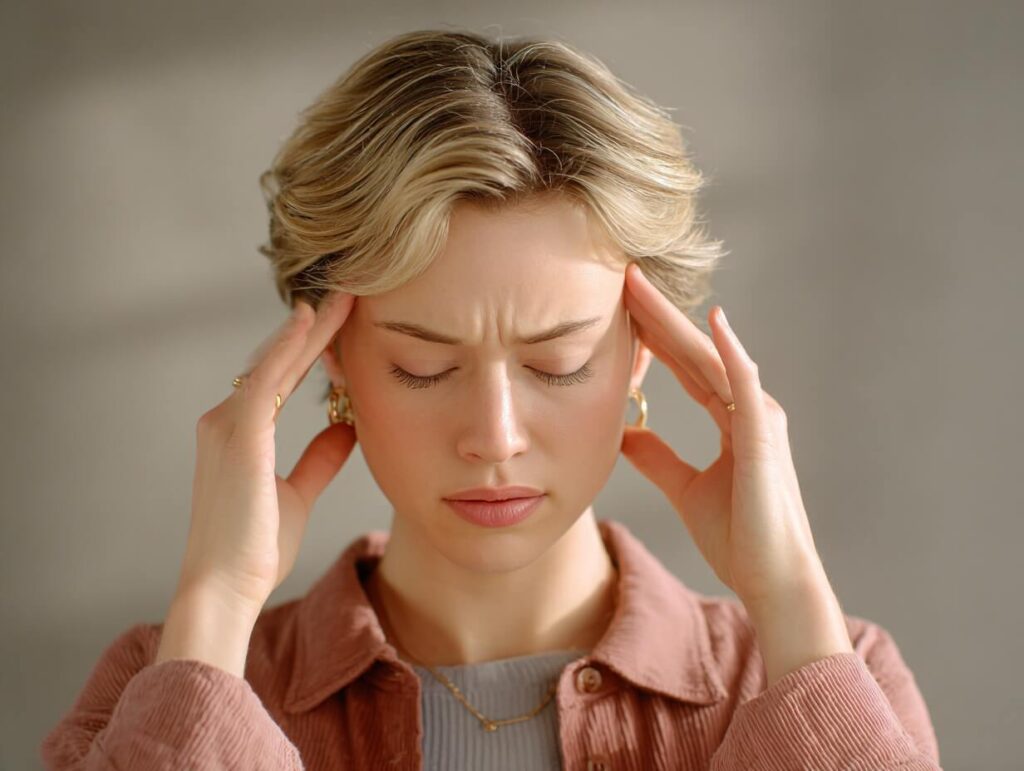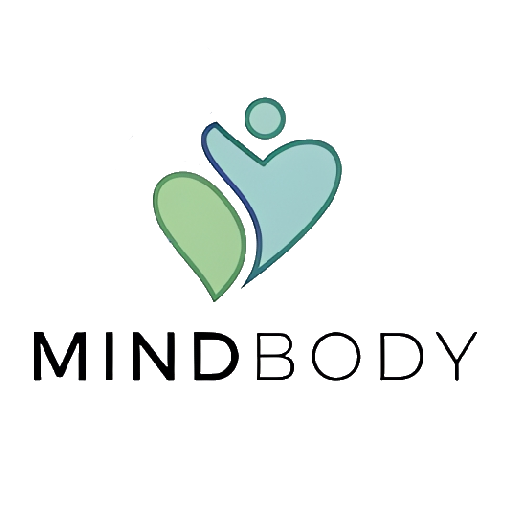Feeling overwhelmed, worried, or down is a normal part of being human. But how do you know if what you’re experiencing is just everyday stress, clinical anxiety, or something more serious like depression? Understanding the difference between stress, anxiety, and depression is crucial for getting the right help at the right time and protecting your mental health.
These three conditions share overlapping symptoms, which often leads to confusion. You might feel exhausted and struggle with sleep whether you’re stressed about a deadline, anxious about the future, or depressed. However, these mental health conditions have distinct characteristics, causes, and treatment approaches. This comprehensive guide will help you recognize the signs of each condition and understand when it’s time to seek professional support.
Contents of the article:
Understanding Stress: Your Body’s Alarm System
Understanding Anxiety: When Worry Takes Over
Understanding Depression: More Than Just Sadness
When to Seek Professional Help
Treatment Options and Next Steps
Living Well: Prevention and Self-Care
Conclusion: You Don’t Have to Navigate This Alone
Understanding Stress: Your Body’s Alarm System
Stress is your body’s natural response to challenging or threatening situations. It’s actually designed to help you survive by triggering the “fight or flight” response that prepares you to handle immediate danger. Unlike anxiety and depression, stress is typically temporary and directly linked to specific external pressures or demands.
Common Causes of Stress
Stress usually has identifiable triggers that you can point to:
- Work deadlines and job pressure
- Financial difficulties or major purchases
- Relationship conflicts or divorce
- Moving to a new home
- Health problems or injuries
- Major life changes (marriage, new baby, career change)
- Academic pressures and exams
Recognizing Stress Symptoms
Physical Stress Symptoms Your body reacts to stress in measurable ways. Common physical signs include headaches, muscle tension (especially in shoulders and neck), upset stomach, rapid heartbeat, and difficulty sleeping. You might notice yourself clenching your jaw, experiencing more frequent colds due to weakened immunity, or feeling constantly fatigued.

Emotional Stress Symptoms Emotionally, stress often manifests as irritability, frustration, feeling overwhelmed, or having difficulty relaxing. You might feel short-tempered with loved ones, impatient in everyday situations, or struggle to find joy in activities you normally enjoy.
Behavioral Stress Symptoms Stress changes how you act. You might procrastinate more, avoid responsibilities, change your eating habits (eating too much or too little), increase alcohol or substance use, or withdraw from social connections.
The Key Characteristic of Stress
What distinguishes stress from anxiety and depression is that stress symptoms typically improve once the stressor is removed or resolved. If you’re stressed about a work presentation, you’ll likely feel relief once it’s over. This temporary nature is stress’s defining feature—it has a clear beginning and end tied to external circumstances.
Understanding Anxiety: When Worry Takes Over
Anxiety goes beyond normal stress responses. While stress is a reaction to present circumstances, anxiety involves persistent worry about potential future threats that may never materialize. Anxiety disorders are among the most common mental health conditions, affecting approximately 40 million adults in the United States alone.
Types of Anxiety Disorders
Generalized Anxiety Disorder (GAD) GAD involves excessive worry about everyday situations, even when there’s little reason for concern. People with GAD often describe feeling anxious “about everything” and struggle to control their worry.
Panic Disorder Characterized by sudden, intense panic attacks with physical symptoms like chest pain, shortness of breath, dizziness, and fear of dying. These attacks can occur without obvious triggers.
Social Anxiety Disorder Intense fear of social situations and being judged or scrutinized by others. This goes far beyond normal shyness and can severely impact daily functioning.
Specific Phobias Extreme fear of particular objects or situations (heights, flying, spiders) that leads to avoidance behavior and significant distress.
Anxiety Symptoms and Signs
Physical Anxiety Symptoms Anxiety creates persistent physical tension that doesn’t resolve quickly. Common symptoms include racing heart, sweating, trembling, shortness of breath, dizziness, chest tightness, nausea, and muscle tension. Unlike stress, these physical symptoms may occur even when there’s no immediate threat.

Cognitive Anxiety Symptoms Anxiety hijacks your thinking patterns. You might experience racing thoughts, constant worry about worst-case scenarios, difficulty concentrating, feeling your mind going blank, catastrophic thinking, and hypervigilance (always scanning for threats).
Emotional Anxiety Symptoms Emotionally, anxiety creates feelings of dread, nervousness, restlessness, irritability, and a sense of impending doom. You might feel like something terrible is about to happen even when everything seems fine externally.
Behavioral Anxiety Symptoms Anxiety drives avoidance behaviors. You might avoid situations that trigger anxiety, seek constant reassurance from others, engage in safety behaviors, have difficulty making decisions, or experience sleep disturbances despite being exhausted.
What Makes Anxiety Different
The crucial difference between anxiety and stress is that anxiety persists even when there’s no immediate stressor. The worry is often disproportionate to the actual threat, and anxiety symptoms interfere with daily life for extended periods (typically six months or more for GAD diagnosis). Anxiety also tends to focus on future possibilities rather than present challenges.
Understanding Depression: More Than Just Sadness
Depression, clinically known as major depressive disorder, is a serious mental health condition that affects how you feel, think, and handle daily activities. It’s not just feeling sad or going through a rough patch—depression involves persistent symptoms that significantly impact your quality of life and ability to function.
Types of Depression
Major Depressive Disorder (MDD) The most common form, involving persistent depressed mood and loss of interest in activities for at least two weeks, affecting daily functioning.
Persistent Depressive Disorder (Dysthymia) A chronic form of depression lasting two years or longer with less severe but long-lasting symptoms.
Seasonal Affective Disorder (SAD) Depression that occurs during specific seasons, typically winter months, related to reduced sunlight exposure.
Postpartum Depression Depression occurring after childbirth, more severe and longer-lasting than typical “baby blues.”
Depression Symptoms and Warning Signs
Emotional Depression Symptoms Depression creates a persistent feeling of sadness, emptiness, or hopelessness that doesn’t lift. You might feel worthless, guilty without reason, or experience a profound loss of interest in activities you once enjoyed. Many people with depression describe feeling emotionally “numb” or disconnected from life.
Physical Depression Symptoms Depression has tangible physical effects including significant changes in appetite and weight, sleep disturbances (sleeping too much or too little), constant fatigue and low energy, unexplained aches and pains, and slowed movements or speech that others might notice.

Cognitive Depression Symptoms Depression affects your thinking profoundly. You might struggle with concentration and decision-making, experience memory problems, have recurrent thoughts of death or suicide, engage in negative self-talk, and feel like your brain is moving through fog.
Behavioral Depression Symptoms Depression changes how you act in the world. Common behaviors include withdrawing from friends and family, neglecting personal hygiene and responsibilities, losing interest in hobbies and activities, having difficulty completing routine tasks, and in severe cases, self-harm or suicidal behaviors.
What Distinguishes Depression
Depression’s hallmark is the persistent, pervasive nature of symptoms affecting multiple areas of life simultaneously. Unlike stress (which improves when stressors resolve) or anxiety (which focuses on worry), depression involves a sustained low mood and anhedonia (inability to feel pleasure) that doesn’t necessarily connect to specific external circumstances. Depression also has a significant biological component involving brain chemistry imbalances.
Key Differences at a Glance
Understanding how these conditions differ helps you identify what you’re experiencing and communicate effectively with healthcare providers.
Duration and Triggers
Stress: Short-term, clearly connected to specific external pressures. Resolves when the stressor is addressed.
Anxiety: Long-term (often 6+ months), may lack obvious triggers or be triggered by anticipated future events. Persists even when circumstances are objectively safe.
Depression: Episodes typically last weeks to months, may occur without clear external triggers, and don’t necessarily improve when circumstances change.
Primary Focus
Stress: Present moment challenges and demands you’re currently facing.
Anxiety: Future-oriented worry about things that might happen or go wrong.
Depression: Past-oriented rumination, present feelings of worthlessness, and hopelessness about the future.
Energy Levels
Stress: You feel wired, tense, and “on edge” with difficulty relaxing but still have underlying energy.
Anxiety: Restless energy combined with fatigue from constant worry and hypervigilance.
Depression: Profound exhaustion and lack of motivation even for simple tasks, feeling mentally and physically drained.
Response to Positive Events
Stress: Can still enjoy positive experiences and feel temporary relief during breaks.
Anxiety: May briefly enjoy positive moments but quickly return to worrying about what could go wrong.
Depression: Diminished ability to experience pleasure or joy even during objectively positive events (anhedonia).
When to Seek Professional Help
Knowing when your experiences require professional support is crucial for preventing conditions from worsening and getting effective treatment early.
Warning Signs That Indicate You Need Help
Symptoms Interfere with Daily Life If stress, anxiety, or depression symptoms prevent you from fulfilling work responsibilities, maintaining relationships, caring for yourself, or enjoying activities, it’s time to seek help.
Symptoms Persist for Weeks While occasional stress and worry are normal, symptoms lasting more than two weeks without improvement warrant professional evaluation.
You’re Using Unhealthy Coping Methods Increasing reliance on alcohol, drugs, or other harmful behaviors to manage symptoms indicates you need healthier strategies and professional support.
Physical Health Is Affected When mental health symptoms create physical problems (significant weight changes, chronic pain, weakened immunity), medical and mental health evaluation is important.
Thoughts of Self-Harm Any thoughts of suicide or self-harm require immediate professional intervention. Call 988 (Suicide & Crisis Lifeline) or go to your nearest emergency room.
Who to Contact for Help
Primary Care Physician Your doctor can perform initial screening, rule out medical causes of symptoms, and provide referrals to mental health specialists.
Licensed Therapist or Counselor Psychologists, licensed clinical social workers (LCSWs), and licensed professional counselors (LPCs) provide talk therapy and evidence-based treatments.

Psychiatrist Medical doctors specializing in mental health who can prescribe medications and provide therapy or coordinate with therapists.
Crisis Resources
- National Suicide Prevention Lifeline: 988
- Crisis Text Line: Text HOME to 741741
- SAMHSA National Helpline: 1-800-662-4357
Treatment Options and Next Steps
The good news is that stress, anxiety, and depression are all highly treatable conditions. Understanding your options helps you make informed decisions about your mental health care.
Evidence-Based Treatments
Cognitive Behavioral Therapy (CBT) CBT is highly effective for anxiety and depression, teaching you to identify and change negative thought patterns and behaviors. It provides practical skills you can use long-term.
Mindfulness-Based Therapies Mindfulness-Based Stress Reduction (MBSR) and Mindfulness-Based Cognitive Therapy (MBCT) help you develop awareness of thoughts and feelings without judgment, particularly effective for stress and anxiety.
Medication Antidepressants (SSRIs, SNRIs) and anti-anxiety medications can be effective, especially for moderate to severe symptoms. Medication works best combined with therapy.
Lifestyle Interventions Regular exercise, adequate sleep, healthy nutrition, stress management techniques, and social connection all support mental health and enhance treatment effectiveness.
Taking the First Step
Keep a Symptom Journal Track your symptoms, triggers, duration, and severity for 1-2 weeks before seeking help. This information helps healthcare providers understand your experience.
Research Providers Look for licensed mental health professionals with experience treating your specific concerns. Many offer free consultations to ensure good fit.
Prepare for Your Appointment Write down questions, list current medications and supplements, and bring your symptom journal to make the most of your first appointment.
Be Honest and Patient Share your experiences openly with providers and understand that finding the right treatment may take time and adjustment.
Living Well: Prevention and Self-Care
Whether you’re managing stress, anxiety, or depression, or working to prevent these conditions, certain practices support mental health and resilience.
Daily Practices for Mental Wellness
Prioritize Sleep Hygiene Maintain consistent sleep schedules, create relaxing bedtime routines, and aim for 7-9 hours nightly. Quality sleep is foundational for mental health.
Move Your Body Regularly Exercise releases endorphins, reduces stress hormones, and improves mood. Aim for 30 minutes of moderate activity most days.
Practice Stress Management Incorporate daily stress-reduction techniques like deep breathing, meditation, progressive muscle relaxation, or yoga.
Maintain Social Connections Regular contact with supportive friends and family protects mental health and provides perspective during difficult times.
Limit Alcohol and Avoid Substances While tempting for short-term relief, alcohol and drugs worsen anxiety and depression over time.
Set Healthy Boundaries Learn to say no, protect your time and energy, and prioritize activities that support your wellbeing.
Conclusion: You Don’t Have to Navigate This Alone
Understanding the difference between stress, anxiety, and depression empowers you to recognize what you’re experiencing and seek appropriate help. While these conditions share some symptoms, their distinct characteristics require different approaches for effective management.
Remember that experiencing stress, anxiety, or depression doesn’t mean you’re weak or flawed—these are common human experiences and treatable conditions. Whether you’re dealing with temporary stress, persistent anxiety, or struggling with depression, help is available and recovery is possible. Pay attention to your symptoms, trust your instincts about when something feels wrong, and don’t hesitate to reach out for professional support. Early intervention prevents conditions from worsening and helps you develop skills for lifelong mental wellness. Your mental health matters, and taking that first step toward help is an act of courage and self-care that your future self will thank you for.

